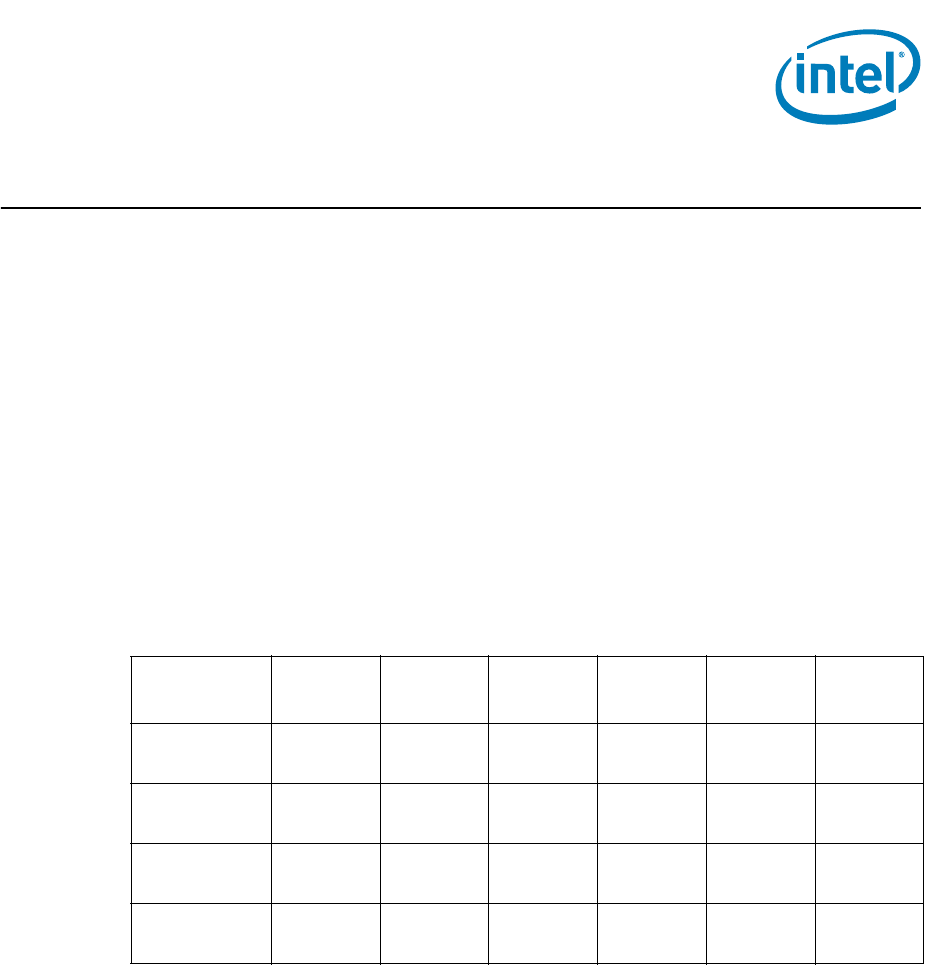
75
1U Thermal Solution
9 1U Thermal Solution
Note: The thermal mechanical solution information shown in this document represents the
current state of the data and may be subject to modification.The information
represents design targets, not commitments by Intel.
This section describes the overall requirements for enabled thermal solutions designed
to cool the Intel
®
Xeon
®
Processor E3-1200 product family including critical to function
dimensions, operating environment and validation criteria in 1U server system. Intel
has developed two different collaboration/reference 1U thermal solutions to meet the
cooling needs in this document.
9.1 Performance Targets
Table 9-1 provides boundary conditions and performance targets for a 1U heatsink to
cool processor in 1U server. These values are used to provide guidance for heatsink
design.
Notes:
1. The values in Table 9-1 are from preliminary design review.
2. Max target (mean + 3 sigma) for thermal characterization parameter.
3. Airflow through the heatsink fins with zero bypass.
4. Max target for pressure drop (dP) measured in inches H
2
O.
9.2 1U Collaboration Heatsink
9.2.1 Heatsink Performance
For 1U collaboration heatsink, see Appendix B for detailed drawings. Figure 9-1 shows
Ψ
CA
and pressure drop for the 1U collaboration heatsink versus the airflow provided.
Best-fit equations are provided to prevent errors associated with reading the graph.
Table 9-1. Boundary Conditions and Performance Targets
Processor Altitude
Thermal
Design
Power
T
LA
Ψca
2
Air Flow
3
Pressure
Drop
4
Intel
®
Xeon
®
processor E3-
1280 (95W)
Sea Level 95W 40.0°C 0.353°C/W 15CFM 0.383
Intel
®
Xeon
®
processor E3-
1200 (80W)
Sea Level 80W 40.8°C 0.353°C/W 15CFM 0.383
Intel
®
Xeon
®
processor E3-
1260L (45W)
Sea Level 45W 42.7°C 0.353°C/W 15CFM 0.383
Intel
®
Xeon
®
processor E3-
1220L (20W)
Sea Level 20W 67.0°C 0.527°C/W 10CFM 0.123
